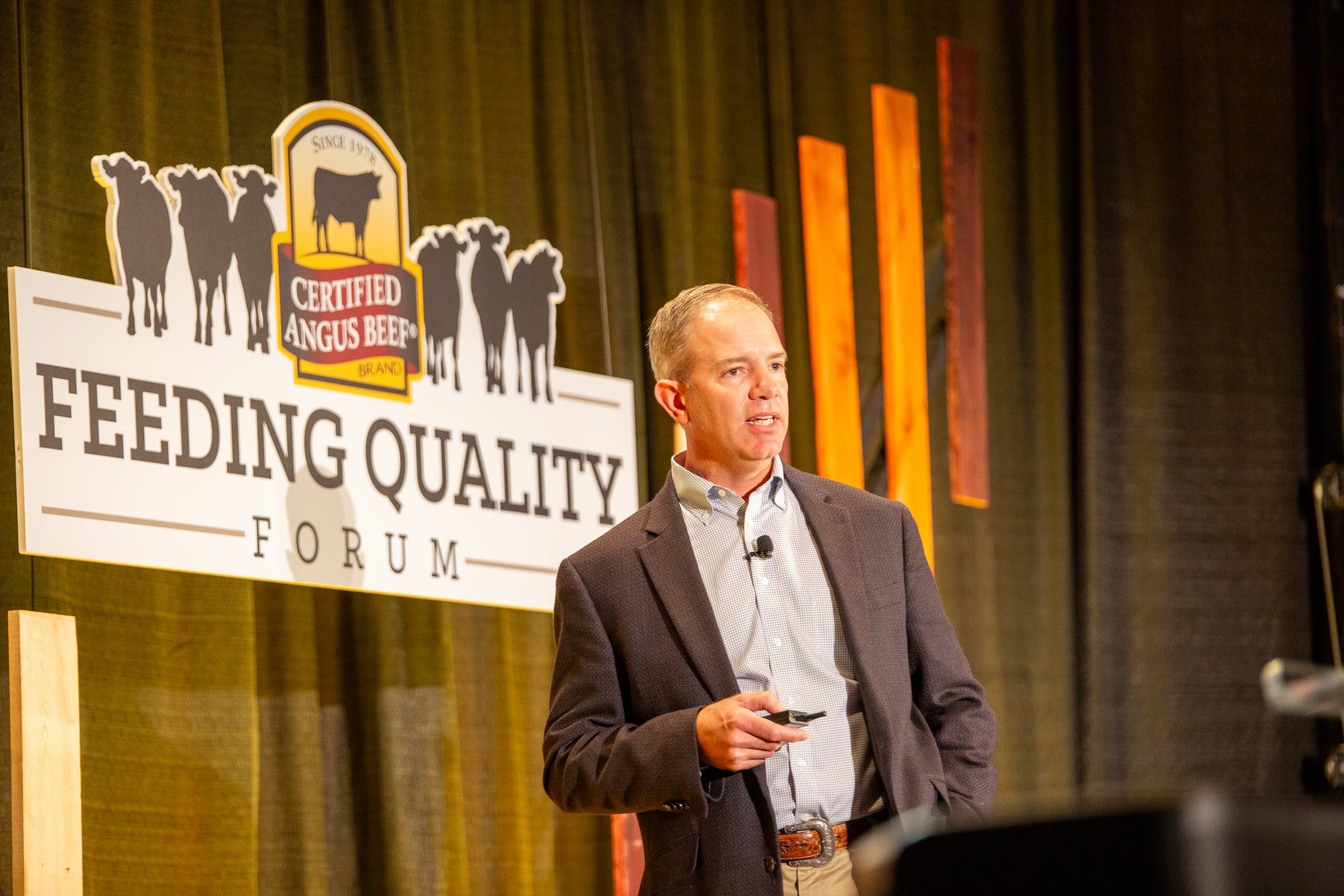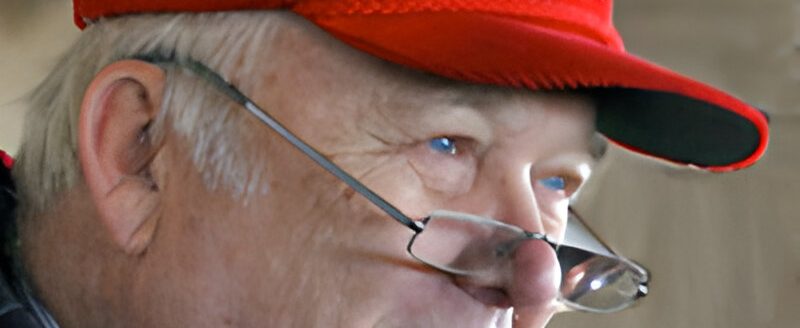Influential 10 percent cattle

Once upon a time those in the cattle business aimed for different goals.
Cow-calf producers wanted heavy calves at weaning that sold well. Those with stockers and/or yearlings wanted good gains. The feeders wanted top dollar for those well-fed, fat steers. The packers had their laundry list of wants, too. The same could be said about consumers.
The beef business ultimately starts with the cow-calf producer, and Paul Dykstra, Certified Angus Beef director of supply management and analysis, told attendees at the Aug. 20 Feeding Quality Forum in Dodge City, Kansas, that a meaningful shift toward carcass quality may not require as extreme a shift as one might think.
According to CAB, there are about 10% of Angus-influenced cattle that miss the upper two-thirds Choice mark. Many are within only 30 marbling points of that designation. Looking back at the data, Dykstra said the low point in “modern history” for carcass quality in the United States wasn’t really that long ago, back in 2006.
“But my how we’ve come so far since that period of time,” he said.
Beef quality and the combined USDA Choice and Prime percentage has reached record highs in modern times. At the same time USDA Select has declined for record lows in recent periods.
“It’s been a long time coming,” Dykstra said. “Since about 2006 we’ve had a lot of things emerging in the beef industry over that period.”
There’s been additions like distiller by-products into rations and camera grading at the packing plants have become the norm. Genetic improvements are ongoing and the industry has seen an increase in hot carcass weights over that period and extra days on feed are being felt in 2024.
All of those have contributed to producing more prime and choice carcasses in the market, and thus the consumers are getting a much better quality product than ever before.
The head count has continued to increase primarily, not linearly and about 22% of the fed cattle harvested are carcasses that are being branded CAB, he said.
“We’re very proud of that, but it’s been a very successful trend for the brand as well, and you can imagine that we are offering more and more product, generally speaking, on an annual basis, to the public,” he said. “Now, granted, we have some contraction as of late that you’re all very keenly aware of, but basically, over time, we’ve offered more product to the public under our label.”
Fortunately, that product has met with ever-growing demand at the same time, according to Dykstra. Since about 2008, CAB has noticed continued increases in the price spreads for quality.
“We see those ebb and flow seasonally throughout the year, but in general, we have taken advantage of and are more profitable due to these price signals,” he said.
The Choice-Select spread in a year like 2024 was narrower, and it got a number of people concerned.
“Well, there’s much more to the story than simple consumer demand for Select,” Dykstra said.
While there is a need for more of the grind material that goes into the 90% lean ground beef, that doesn’t mean there needs to be a designation for fed steers and heifers as Select. Or does it?
“We just need a larger cow harvest. Don’t we?” he said. “From a cow harvest perspective, the Choice/Select spread narrows and responds negatively in those periods where the cow harvest is especially restricted.”
Import and export markets and availability of lean dining beef are also considerations.
“In fact, that the Choice spread is narrower this year than it was a year ago, and consequently, we are seeing declining demand for Choice or higher-grade product,” he said. “This trend combination here is something that I’m happy to share as I think of a more positive piece of data for the marketplace.”
Since 2020, there has been a transition period when it comes to higher grades of beef and how the retail sector can better utilize Prime. For the most part it’s been a good transition, he said. The pandemic has affected data when it comes to prices of retail cuts, but what’s emerged on the other side of it is something to take note of.
“In that backlog of cattle and that restriction of food service business, everybody got retrained with how we’re going to handle food, didn’t we?” Dykstra said. “We learned how to do new things at home with beef, especially the younger people that perhaps like to eat out traditionally, more than people my age and older.”
This allowed the “whole country” an opportunity to re-engage with beef and with quality and to understand the value differentials from Select on up through USDA Prime and CAB brand Prime as well.
Dykstra projects a 15% increase in the annual supply of Prime by the end of 2024.
“We’re challenged right now with a narrower Prime to Choice spread,” he said. “We’re once again in a period due to heavier carcass weights and historically strong quality grading where USDA Prime is once again quite prolific in the country at the same time, at the price point that is also record high retail.”
The production sector is not to blame for this, but it does tend to be a bit of a challenge to consumers.
“But we’re going to take it head on at Certified Angus Beef,” he said. “We believe that our growth opportunity in the next two to three years is precisely in certifying this beef brand Prime because we know that the supply will be rather good.”
Kylene Scott can be reached at 620-227-1804 or [email protected].



